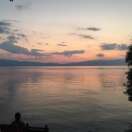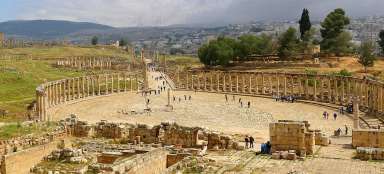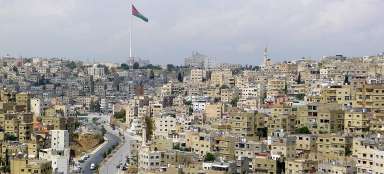
Jerusalem – Haifa – Dead Sea (Arad, Masada) – Tel Aviv – October 2022
Ben Gurion Airport
We arrived on the night from Tuesday to Wednesday. Check in full of orthodox and non-moving queue. Renting a booked car (Budget company) at 5:30 in the morning basically went smoothly, we „turned it off“ for two hours at a gas station in front of Jerusalem and fell asleep.

View of Jerusalem from the Mount of Olives
We arrived on the night from Tuesday to Wednesday. Check in full of orthodox and non-moving queue. Renting a booked car (Budget company) at 5:30 in the morning basically went smoothly, we broke it off for two hours at a gas station in front of Jerusalem. The old city with the holiest places is located on an area of one square kilometer. I will not quote here the information available elsewhere, I will only mention that after a few hiccups (yes, we went unprepared, without a paper guide and also without data) we nevertheless discovered the famous Golgotha, including the rock where Christ rose from the dead (unfortunately somehow it didn't happen that a church already stands above it). To at least make up for the fact that we don't remember much, we played Jesus Christ Superstar in the car and watched Monty Python's Life of Brian in the evening to relax. PS: Christ was captured on the Mount of Olives.
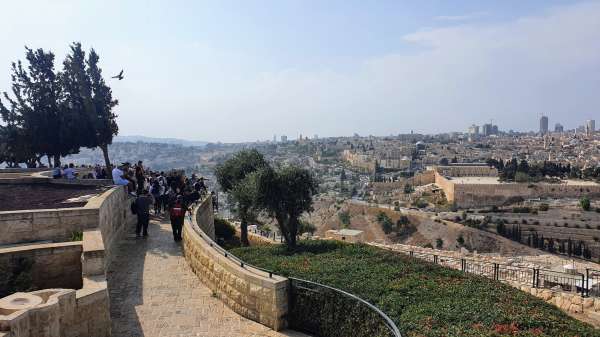
The largest cemetery in the world
Aaaah
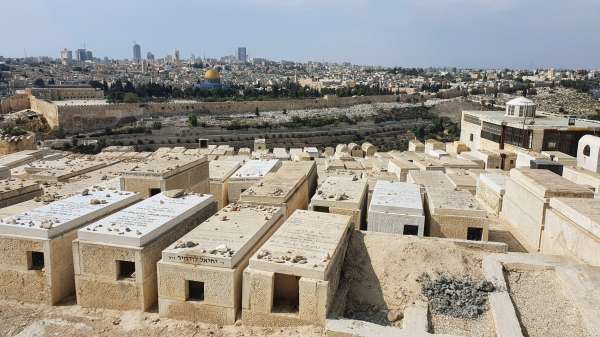

Queue at the Holy Sepulcher
Wailing Wall

Rothberg High School
Our trip was also a business trip. Therefore, perhaps the – not quite optimal – sequence of destinations. If you've already been to Jerusalem, you're more likely to head straight to the Dead Sea – ideally through the Palestinian territories, which is a stone's throw away if you don't have a rental car – but we headed back from Jerusalem via Tel Aviv to the north to Ramat HaSharon, because a meeting was waiting for me at the local High school there. I keep comments on Israeli education and all kinds of observations, often surprising, in the blog or somewhere else, anyway, the cooperation was successfully established and we could continue our educational journey.


North of Tel Aviv, Haifa
Our trip was also a business trip. Therefore, perhaps the – not quite optimal – sequence of destinations. If you've already been to Jerusalem, you'd rather head straight to the Dead Sea – ideally through the Palestinian territories, which is a stone's throw away if you don't have a rental car – but we headed back from Jerusalem via Tel Aviv to the north to Ramat HaSharon, because a meeting was waiting for me at the local High school there. I keep comments on Israeli education and all kinds of observations, often surprising, in the blog or somewhere else, anyway, the cooperation was successfully established and we could continue our educational journey.

Prices
You need a reservation in advance for the Haifa Gardens, which can be done online, but they won't let you in without a guide. The central alley is full of restaurants and comes alive in the evening. Beer costs the same as wine, i.e. around 35 shekels, which you multiply by six for crowns. The strange thing is that food is expensive in Israel even in the store. You can get a good coffee almost everywhere and it costs around twenty shekels, depending on the type of course (for that price, get a medium cappuccino). Of course, the photo shows hummus, which cannot be missing from the table, and the photo was not taken in Haifa, but that doesn't matter. You pay 40 shekels for a small pizza and the salad costs about the same.
Caesarea
Excavations of an ancient city from the time of the Roman Empire are located right on the coast of the Mediterranean Sea between Haifa and Tel Aviv. There are not only the surviving remains of a theater that is said to be larger than the Roman Colosseum, but also the ruins of one of the largest hippodromes of the Roman Empire.

Masada
We managed to reach Masada on the same day – that is, the third day. The ancient fortress is located on a rocky cliff just off the coast of the Dead Sea and is on the UNESCO list. The site is known primarily as a symbol of Jewish heroism and freedom, as it was the last place of Jewish resistance against the Romans at the beginning of our era. A thousand men, women and children here chose to die by their own hands rather than surrender.


Cable car up
A cable car goes up to Masada. Here, too, you are more than a hundred meters below sea level. (At the Dead Sea, it's almost half a kilometer.) We arrived just in time to catch the last chance to look up, a little disappointed that we couldn't walk it, but had to take the cable car.
Ein Gedi
The furthest place you can go from Masada to the Palestinian border. There is a national park, an oasis, you are on the coast of the Dead Sea, all around is the Judean desert. The town consists of a hotel complex, but the only place you can easily get to is a quirky and picturesque campsite run by the local kibbutz.

Dead Sea
Due to its extreme salinity, the Dead Sea is really buoyant and the idea of drowning in it seems impossible. Staying in water is not particularly pleasant either, it is really thick, it stretches over your body and you want to wash it off right away. The photo was taken in the early evening in the resort of Ein Bokek on the public city beach at an altitude of –377 meters.

Tel Aviv
Day four. In the morning we moved from Arad by car (about an hour and a half journey) and were surprised by the calm that reigned in the city on Saturday morning. We parked in the center, perfectly fine and even without paying, and walked towards Ha Yarkon Park, through the White City and HaCarmel (the market was closed unfortunately), then along the coast and finally bypassed Jaffa. We walked 22 kilometers. Swimming is prohibited on the beaches almost everywhere, but everyone swims. Even in Tel Aviv itself, unfortunately, there is the same mess as in the rest of the country – garbage, bleak facades of houses covered with all kinds of wires and cables, scary corners that you avoid. Despite all sorts of superlatives, Israel unfortunately remains an east because of this.
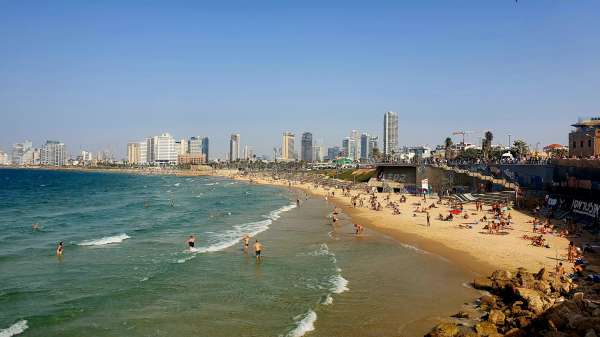
Tel Aviv-Jaffa
A final photo from the port city and some statistics: in 4 days we drove 800 km (Israel is a small country and you can get around everything), but we also walked 65 kilometers on foot. Ledacos is automated, for example paying for gas, but it is often the controls are only in hebrew and people are not very willing to help you nor do they speak the english you would expect. In short, you get the feeling that everyone is used to taking care of themselves here.



